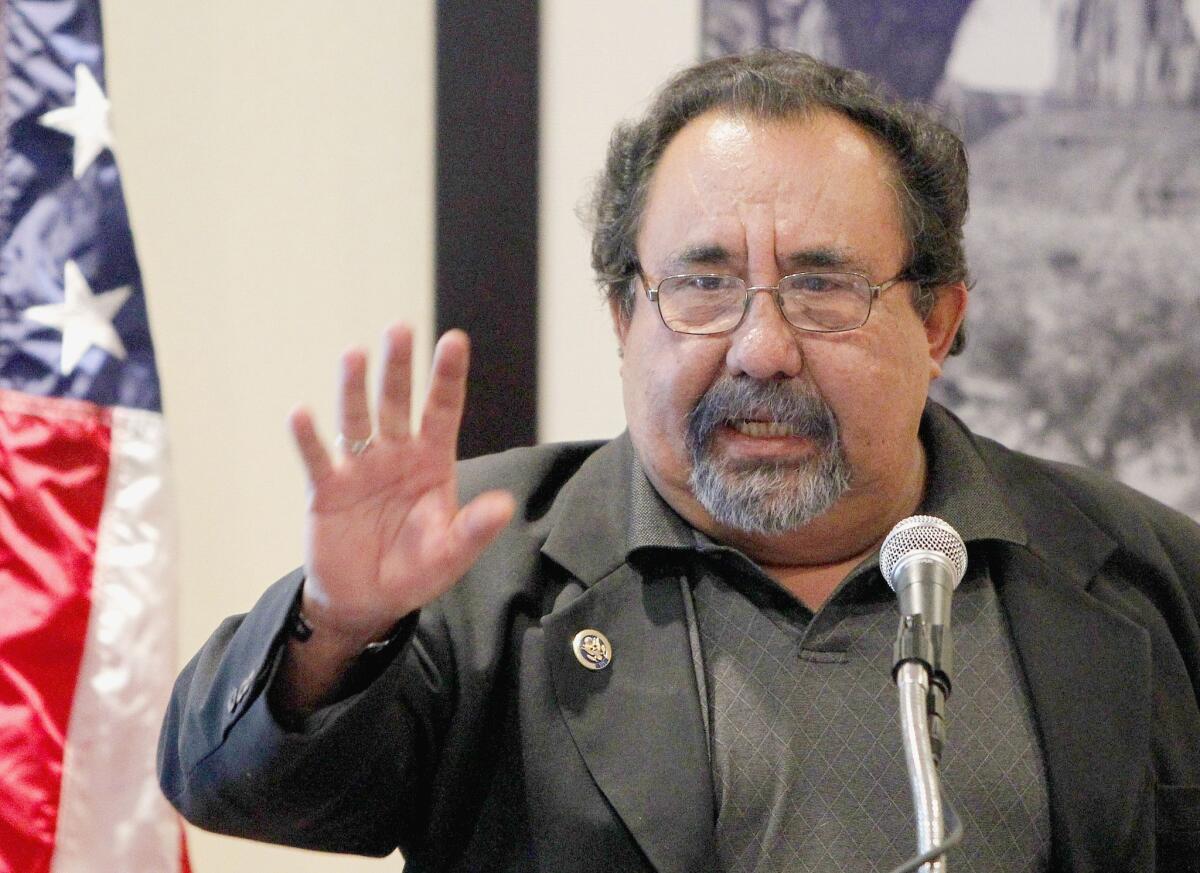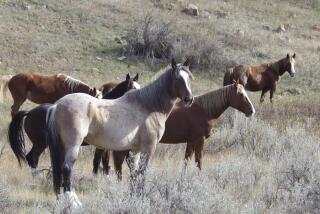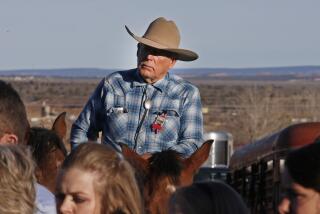Arizona’s Grijalva, a BLM critic, tours wild horse corrals in Nevada

- Share via
LAS VEGAS — A major government critic of the Bureau of Land Management’s treatment of wild horses in the West was in Nevada on Wednesday to inspect an agency corral housing 1,500 mustangs recently rounded up from federal range land.
Arizona Rep. Raul M. Grijalva, the top Democrat on a congressional panel on public lands, is taking a tour with several animal advocates for a up-close view of a program that has divided activists and federal officials in 10 states across the West.
“The congressman has been tracking the wild horse and burro issue for pretty much the entire time he’s been on committee, over the last 10 years,” Brandon Bragato, a senior legislative assistant for the congressman, told the Los Angeles Times. “He’s concerned with the way the BLM is managing these animals and the techniques they’re using to restrict herd size on the range. He wants to take a look at the program.”
Grijalva is the ranking member of the House Natural Resources subcommittee on public lands and environmental regulation who was elected in 2002 in the 3rd District representing Tucson.
The tour will take place at the BLM’s temporary holding facility in Palomino Valley north of Reno, where critics say animals have been treated inhumanely and that several animal deaths have occurred.
Each year the BLM rounds up thousands of mustangs — pintos and bays, roans and grays — and trucks them off to be readied for adoption or sent to fenced-in Midwestern tracts, where ranchers are paid by the government to house the horses for the rest of their lives.
The BLM estimates that 49,000 wild horses are held in such facilities. In 2012, holding costs of $42 million devoured more than half of the BLM’s $72-million budget for its horse and burro program.
About 31,500 remain on the range. In June, a panel from the National Academy of Sciences’ National Research Council blasted the bureau’s emphasis on roundups as “expensive and unproductive.” The report calls for more birth control — a vaccine for mares, chemical vasectomies for males — and urged the agency to show greater transparency in how it operates.
Grijalva has said it makes no sense to spend tens of millions of taxpayer dollars to round up horses from their native range when the government has no room to store them. He said he’s especially worried about recent research suggesting BLM roundups have the unintended consequence of actually increasing wild horse populations.
Bragato told The Times that the timing of this week’s visit to Nevada is critical: Next week, the BLM’s Wild Horse and Burro Advisory Board meets.
“He has his eye on that meeting and wants to send a message on the importance of reforming the program,” Bragato said.
ALSO:
1 student dead, 3 injured in Texas high school stabbing
Ariel Castro commits suicide, hangs himself with bedsheet
Paper fliers threaten to name Portland residents on public aid
Follow L.A. Times National on Twitter
More to Read
Sign up for Essential California
The most important California stories and recommendations in your inbox every morning.
You may occasionally receive promotional content from the Los Angeles Times.














